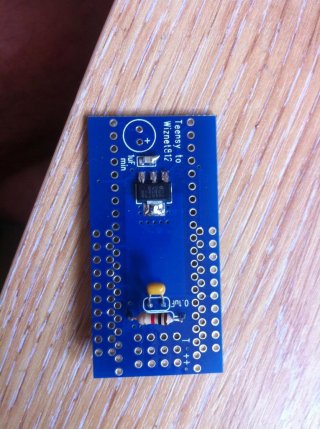@headroom
from the docs http://www.pjrc.com/teensy/td_libs_Ethernet.html
Ethernet.begin(mac, ip, gateway, subnet);
Initialize the Ethernet library and hardware. "mac" and "ip" are required. "gateway" and "subnet" are optional.
If I just use mac, the code doesnt compile.
My network accepts static IP and dynamic, half my pc's are static half dynamic, and even if the IP was conflicted, the IP should be set in code and be reported via the serial monitor anyway shoudln't it?
@Paul, I'm asuming it is fucked, hence buying a new one at the weekend and only using that once I knew my power was at 3v
@stevech how can I assume my wiring is correct when the most basic example fails to work? But I dont know how to R/W a register as I've never play with this kit before... Do you have code I could run as a check?
What is the maximum wattage of PSU I should use with this setup? Initially I had a 10a 5v supply, and I get the feeling that the regulators are trying to drop the voltage of the whole power output, I was under the impression that they should only draw what they need, certainly teensy3 doesnt mind being on a 10a supply, but I presume I am wrong here? Given that I've killed 2 of your adapter boards, or certainly the regulators thereon...
from the docs http://www.pjrc.com/teensy/td_libs_Ethernet.html
Ethernet.begin(mac, ip, gateway, subnet);
Initialize the Ethernet library and hardware. "mac" and "ip" are required. "gateway" and "subnet" are optional.
If I just use mac, the code doesnt compile.
My network accepts static IP and dynamic, half my pc's are static half dynamic, and even if the IP was conflicted, the IP should be set in code and be reported via the serial monitor anyway shoudln't it?
@Paul, I'm asuming it is fucked, hence buying a new one at the weekend and only using that once I knew my power was at 3v
@stevech how can I assume my wiring is correct when the most basic example fails to work? But I dont know how to R/W a register as I've never play with this kit before... Do you have code I could run as a check?
What is the maximum wattage of PSU I should use with this setup? Initially I had a 10a 5v supply, and I get the feeling that the regulators are trying to drop the voltage of the whole power output, I was under the impression that they should only draw what they need, certainly teensy3 doesnt mind being on a 10a supply, but I presume I am wrong here? Given that I've killed 2 of your adapter boards, or certainly the regulators thereon...


